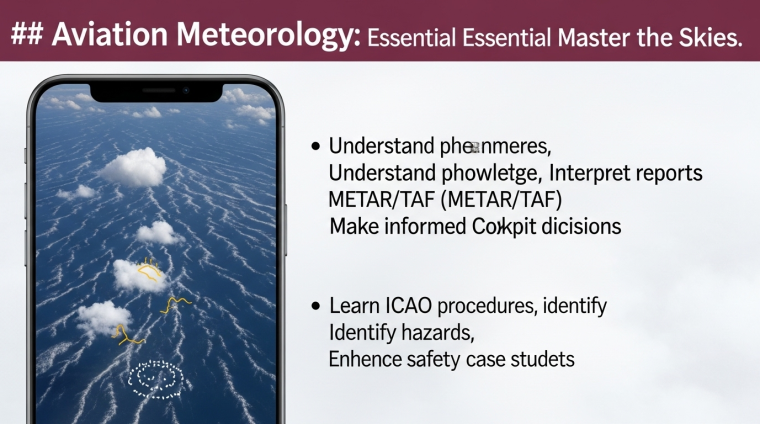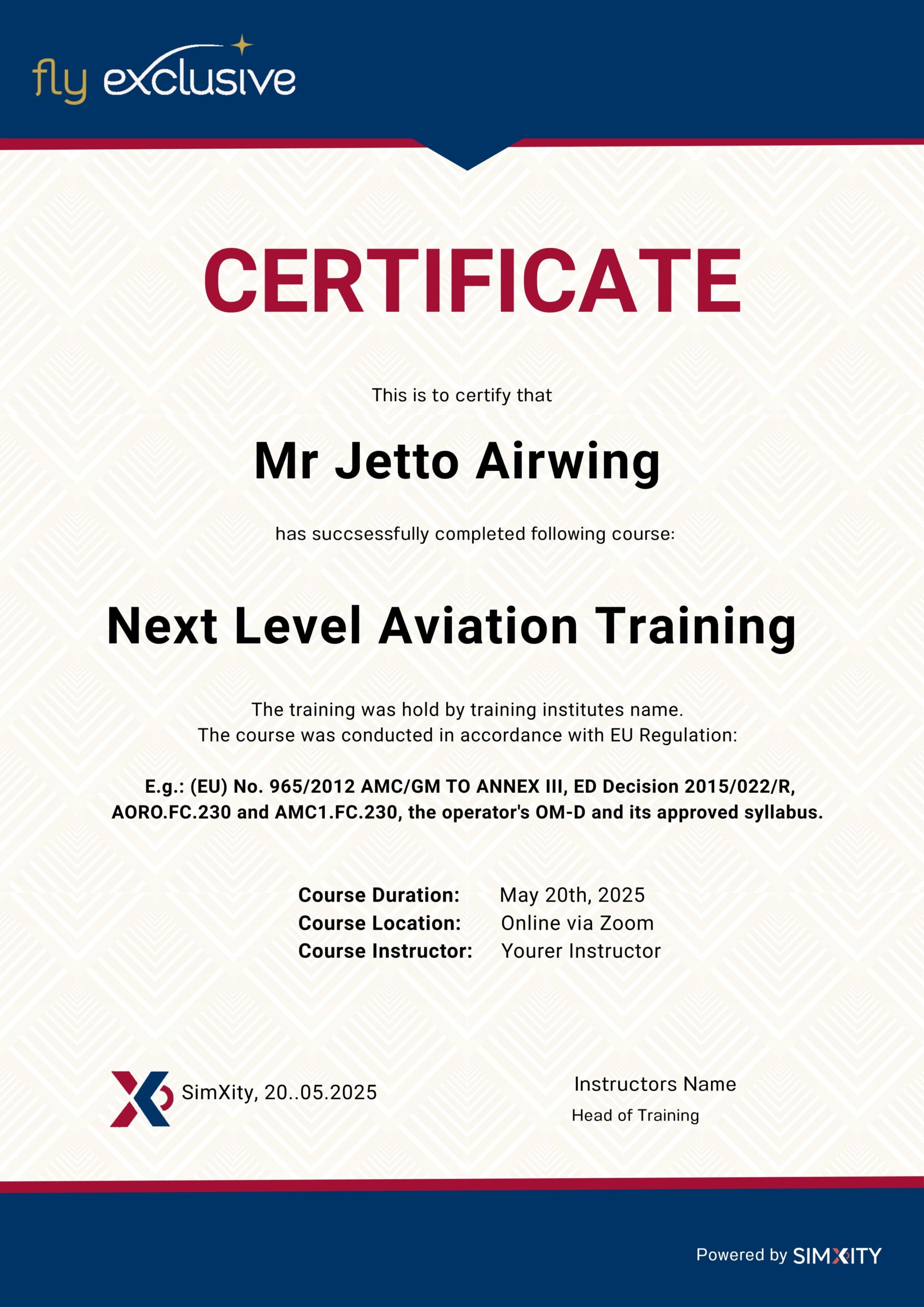Aviation Meteorology – Essential Weather Knowledge for Pilots

Learn with SimXity
Aviation Meteorology – Essential Weather Knowledge for Pilots gives you the skills to understand weather phenomena, interpret METAR/TAF reports, and make informed decisions in the cockpit. Learn ICAO-standard procedures, identify hazardous weather, and improve flight safety through interactive lessons and case studies — essential for student and professional pilots alike.
Course Overview
This course provides pilots and aviation professionals with solid meteorological knowledge tailored to flight operations. Participants will learn how to understand weather phenomena, interpret aviation weather reports, and make informed decisions to ensure safe and efficient flights.
Learning Objectives:
-
Understand fundamental meteorological processes
-
Apply weather information to flight planning and in-flight decision-making
-
Identify and avoid hazardous weather conditions
-
Improve safety and efficiency in flight operations
Target Audience:
-
Student pilots (PPL, CPL, ATPL)
-
Commercial pilots
-
Flight dispatchers and flight operations officers
Curriculum
- 5 Sections
- 18 Lessons
- 1 Week
- Module 1: Fundamentals of MeteorologyThis module introduces the essential meteorological concepts every pilot needs to master for safe flying. You will learn why weather knowledge is critical for flight safety, understand the ICAO standards that govern meteorological information in aviation, and explore the structure of the atmosphere — from the troposphere to the mesosphere. Discover how temperature changes with altitude and how these layers affect flight conditions. A short quiz will help you solidify your understanding of these atmospheric basics.4
- Module 2: Weather Elements and MeasurementsModule 2: Weather Elements and Measurements In this module, you will dive into the key weather elements that directly impact flight operations: temperature, pressure, humidity, wind, and precipitation. Learn how each element is measured using specialized instruments and why accurate data collection is crucial for reliable weather forecasts. By understanding how these elements interact, you’ll be better equipped to anticipate and respond to changing flight conditions, ensuring safety and efficiency in the air.4
- Module 3: Clouds and Weather PhenomenaThis module explores the fascinating world of clouds and the weather phenomena that pilots must recognize and understand. Learn to identify different cloud types, their formation processes, and what they reveal about current and upcoming weather conditions. Discover critical weather events like turbulence, icing, thunderstorms, and fog—understanding their causes and how they affect flight safety. Mastering this knowledge empowers you to make informed decisions and navigate safely through diverse meteorological challenges.5
- Module 4: Weather Charts and Aviation Weather ReportsIn this module, you will learn to interpret essential weather charts and aviation weather reports that are vital for flight planning and in-flight decision-making. Understand different chart types—such as surface analysis, wind, and radar charts—and decode METARs, TAFs, and SIGMETs with confidence. This knowledge equips you to anticipate weather changes, enhance situational awareness, and maintain safety throughout your flight.5
- Module 5: Meteorology in Flight OperationsThis module focuses on applying meteorological knowledge directly to flight operations. Learn how weather conditions affect takeoff, en-route flight, approach, and landing phases. Understand how to interpret weather briefings, recognize hazards such as turbulence, wind shear, and icing, and make smart decisions to ensure safety and efficiency. Mastering this module empowers you to integrate weather awareness seamlessly into every stage of your flight.5
- 5.1Flight Planning in Various Weather Conditions Planning in Various Weather Conditions10 Minutes
- 5.2Decision-Making in Deteriorating Weather10 Minutes
- 5.3Strategies for Weather Avoidance10 Minutes
- 5.4Simulation: Weather-Based Flight Decision Scenario10 Minutes
- 5.5Final Quiz (All Modules)30 Minutes10 Questions
You might be intersted in
-
18 Students
-
1 Hour
-
679 Students
-
2 Hours
-
677 Students
-
1 Hour
-
679 Students
-
1 Hour














